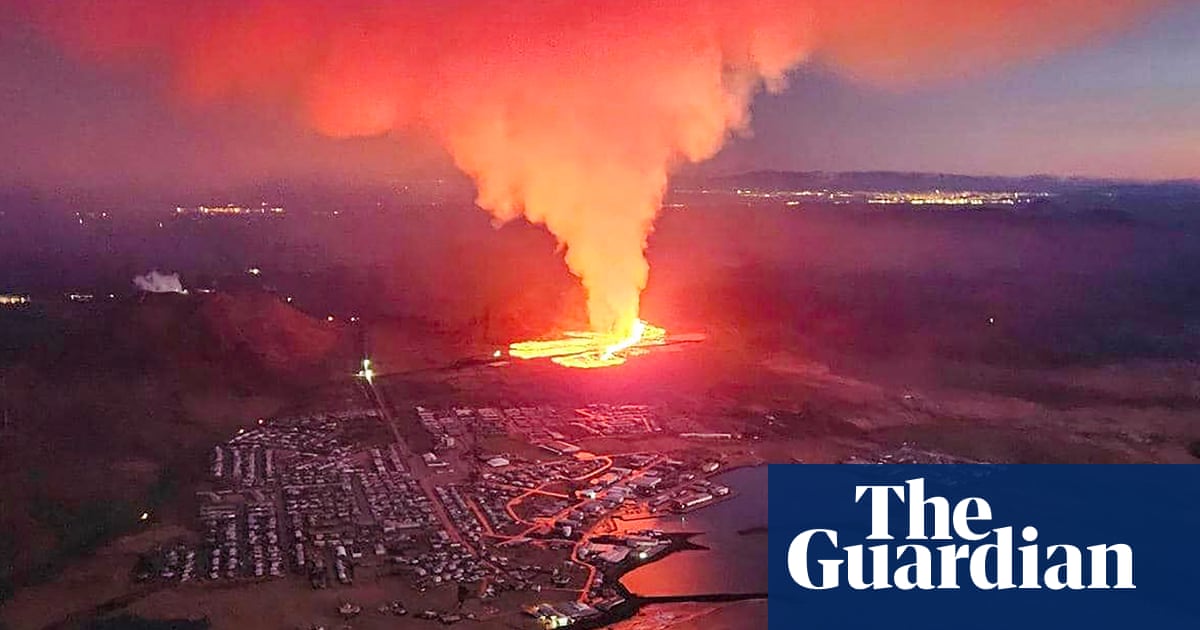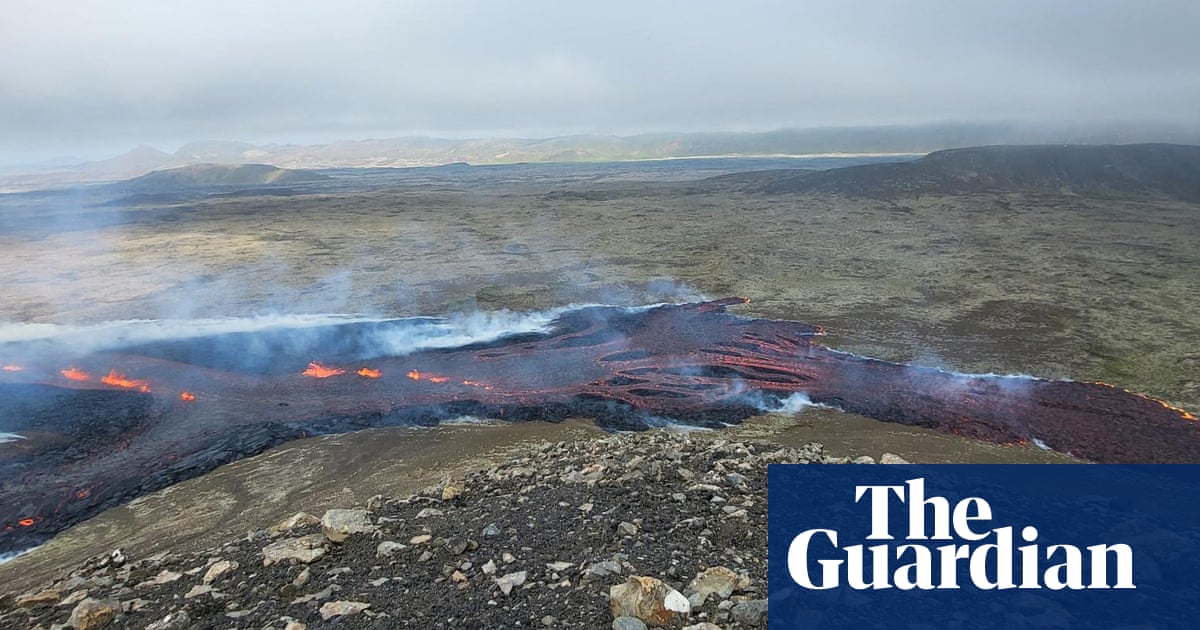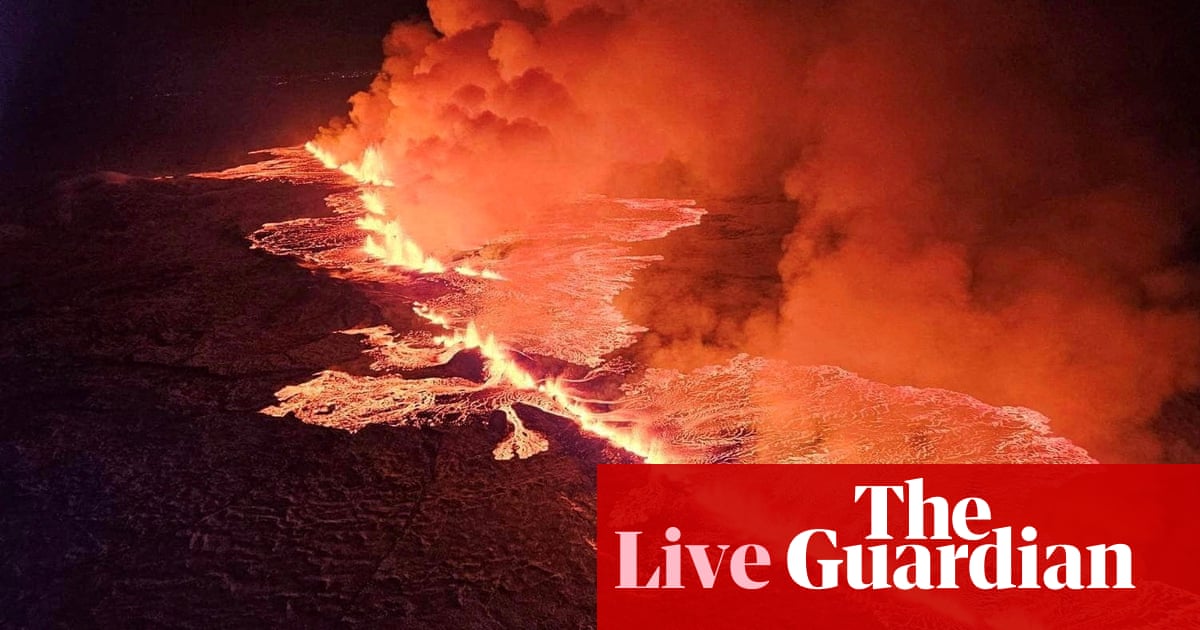
Houses have caught fire in the fishing town of Grindavík in south-west Iceland after a volcano erupted for the second time in less than a month.
Two fissures formed near the town on Sunday after an increase in seismic activity that prompted authorities to evacuate the community the day before.
A first eruption began at 8am when a crack opened in the ground about 450 metres from the town. Protective barriers of earth and rock pushed lava from the first fissure away from the town. However, a second crack then opened around midday on the edge of town, with that lava engulfing the homes.
Jets of glowing orange lava flowed out and a huge smoke cloud rose against the dark sky.
“In a little village like this one, we’re like a family, we all know each other as family – it’s tragic seeing this,” one local resident, Sveinn Ari Gudjonsson, told Agence France-Presse. “It’s unreal, it’s like watching a film,” added the 55-year-old, who works in the fishing industry.
The nearby geothermal spa Blue Lagoon had closed on Sunday, it said on its website.
Iceland’s president, Guðni Jóhannesson, told the nation that “when it matters, we stand together”, in a televised address on Sunday night.
“What we all hoped would not happen has happened,” he said. “We hope that everything will go as well as possible.”
In a post on X earlier, Jóhannesson said “no lives are in danger” but he warned “infrastructure may be under threat”.
Benedikt Ófeigsson at the Icelandic Meteorological Office told RUV that the volcano “continues to surprise us”. “Things were slowing down after the eruption started, but about half an hour or an hour ago they started to pick up speed again. We are no longer seeing a slowdown in the town.”
Iceland’s civil protection agency said it had raised its alert level to “emergency”, the highest on its three-point scale, indicating an event had started that could cause harm to people, property, communities or the environment.
The eruption is the fifth on the Reykjanes peninsula since 2021. There was a powerful volcanic eruption near Grindavík on 18 December after weeks of earthquakes. The town’s 3,800 people had already been evacuated weeks before as a precaution. More than 100 people had returned in recent weeks, but they were evacuated again on Saturday.
Linda Karen Gunnarsdóttir from the Animal Protection Association of Iceland told RUV a group of sheep were still in pens inside the town and needed to be rescued as soon as possible.
Officials are keeping a close eye on the nearby Svartsengi geothermal plant, which provides electricity and water to the 30,000 people of the Reykjanes peninsula.
In a separate incident, a search was called off on Saturday for a man who was believed to have fallen into a fissure in the town. Emergency services said they had done everything they could to restrict the danger to rescuers, but it was not considered justifiable to put their lives at risk.
Iceland’s positioning between the Eurasian and North American tectonic plates, which move in opposite directions, make it a seismic and volcanic hotspot.
In 2010, ash clouds from eruptions at the Eyjafjallajökull volcano in the south of Iceland spread over large parts of Europe, grounding 100,000 flights and forcing hundreds of Icelanders to evacuate their homes.
Unlike Eyjafjallajökull, the Reykjanes volcano systems are not trapped under glaciers and are thus not expected to cause similar ash clouds.











